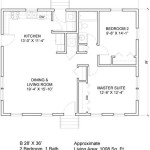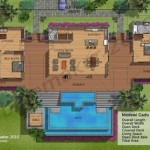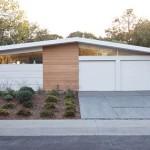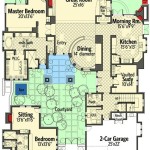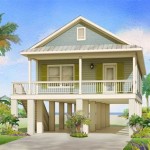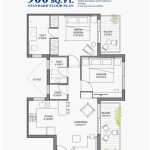Georgian architecture house plans are blueprints that guide the design and construction of homes in the Georgian style. This architectural style, popular in Great Britain and its colonies from the 18th to the early 19th centuries, is known for its symmetrical facades, rectangular shapes, and classical details. A notable example of a Georgian home is Mount Vernon, the plantation of George Washington.
Georgian architecture house plans typically include detailed drawings for the home’s exterior, interior, and structural elements. These plans provide architects, contractors, and homeowners with a comprehensive guide to ensure the accurate and consistent execution of the Georgian style.
In the following sections, we will delve into the key characteristics of Georgian architecture house plans, explore their historical significance, and provide practical guidance on choosing and implementing these plans for your own home.
When considering Georgian architecture house plans, it is crucial to keep the following key points in mind:
- Rectangular shape
- Symmetrical facade
- Classical details
- Central doorway
- Multi-paned windows
- Hipped roof
- Palladian window
- Decorative moldings
- Grand staircase
These elements combine to create the distinctive and elegant character of Georgian architecture.
Rectangular shape
Georgian architecture house plans are characterized by their rectangular shape. This shape creates a sense of balance and symmetry, which is a hallmark of Georgian architecture. The rectangular shape also allows for a more efficient use of space, as rooms can be arranged in a logical and orderly manner.
The rectangular shape of Georgian homes is often emphasized by the use of quoins, which are decorative blocks of stone or brick that are placed at the corners of the building. Quoins create a visual contrast between the walls and the corners, and they help to define the rectangular shape of the home.
In addition to quoins, Georgian homes often feature other decorative elements that emphasize the rectangular shape, such as pilasters, cornices, and pediments. These elements add a sense of grandeur and sophistication to the home, and they help to create a cohesive and visually appealing design.
The rectangular shape of Georgian architecture house plans is not only aesthetically pleasing, but it is also practical. The rectangular shape allows for a more efficient use of space, and it makes it easier to add on to the home in the future. If you are considering building a Georgian-style home, the rectangular shape is a key element to keep in mind.
Symmetrical facade
One of the most distinctive characteristics of Georgian architecture house plans is their symmetrical facade. This means that the front of the house is divided into two equal halves, with a central doorway and windows arranged in a balanced and orderly manner.
The symmetrical facade of Georgian homes creates a sense of harmony and proportion. It also makes the home appear more spacious and grand. The symmetry of the facade is often emphasized by the use of classical details, such as pilasters, cornices, and pediments.
The central doorway is a key element of the symmetrical facade. It is typically flanked by two windows on each side, and it is often topped by a pediment or other decorative element. The central doorway provides a formal entrance to the home, and it helps to create a sense of hierarchy and order.
The windows in Georgian homes are typically multi-paned and arranged in a symmetrical pattern. The windows are often placed on the first and second floors of the home, and they are often topped by decorative cornices or pediments. The windows provide natural light and ventilation to the home, and they also add to the home’s overall aesthetic appeal.
The symmetrical facade of Georgian architecture house plans is a key element of the Georgian style. It creates a sense of harmony, proportion, and grandeur. If you are considering building a Georgian-style home, the symmetrical facade is a key element to keep in mind.
Classical details
Georgian architecture house plans often incorporate classical details, which are inspired by the architecture of ancient Greece and Rome. These details add a sense of sophistication and grandeur to the home, and they help to create a cohesive and visually appealing design.
Some of the most common classical details used in Georgian architecture house plans include:
- Columns: Columns are a key element of classical architecture, and they are often used in Georgian homes to support porticos, balconies, and other structural elements. Columns can be made of wood, stone, or brick, and they can be either fluted or plain.
- Pediments: Pediments are triangular-shaped gables that are often used to crown the front entrance of a Georgian home. Pediments can be plain or decorated with carvings or other embellishments.
- Cornices: Cornices are horizontal moldings that are used to decorate the eaves of a Georgian home. Cornices can be simple or elaborate, and they can be made of wood, stone, or brick.
- Pilasters: Pilasters are flat columns that are attached to the wall of a Georgian home. Pilasters can be used to decorate the corners of the home, or they can be used to flank windows and doorways.
Classical details can be used to add a touch of elegance and sophistication to any Georgian-style home. When used in moderation, these details can help to create a home that is both beautiful and timeless.
Central doorway
The central doorway is a key element of Georgian architecture house plans. It is typically located in the center of the facade, and it is flanked by two windows on each side. The central doorway is often topped by a pediment or other decorative element, and it provides a formal entrance to the home.
The central doorway is typically made of wood, and it is often painted a contrasting color to the rest of the facade. The doorway may be surrounded by a simple or elaborate surround, and it may feature decorative details such as carvings or moldings.
The central doorway is an important focal point of the Georgian-style home. It creates a sense of symmetry and balance, and it adds to the home’s overall grandeur. The central doorway is also a practical element of the home, as it provides a convenient and formal entrance.
In addition to its aesthetic and practical value, the central doorway also has symbolic significance. The central doorway is often seen as a symbol of welcome and hospitality. It is the place where guests are greeted and welcomed into the home.
Multi-paned windows
Multi-paned windows are a key feature of Georgian architecture house plans. These windows are divided into multiple panes by a grid of wooden muntins. The muntins can be arranged in a variety of patterns, but the most common pattern is a simple grid of six or eight panes.
Multi-paned windows were originally developed for practical reasons. Prior to the invention of large sheets of glass, small panes were the only way to create a large window opening. Multi-paned windows were also more resistant to damage than single-pane windows, as a broken pane could be easily replaced without having to replace the entire window.
In addition to their practical value, multi-paned windows also have a number of aesthetic benefits. The muntins create a sense of rhythm and proportion, and they add a touch of elegance and sophistication to the home. Multi-paned windows also allow for a greater degree of natural light and ventilation than single-pane windows.
Multi-paned windows are a key element of Georgian architecture house plans. They add a sense of character and charm to the home, and they help to create a cohesive and visually appealing design.
Hipped roof
A hipped roof is a roof with four sloping sides that meet at a ridge at the top of the roof. Hipped roofs are often used in Georgian architecture house plans because they are both aesthetically pleasing and practical.
- Aesthetic appeal: Hipped roofs add a sense of elegance and sophistication to a home. The sloping sides of the roof create a graceful and balanced silhouette that is visually appealing. Hipped roofs also allow for a greater degree of architectural detailing, such as dormers, chimneys, and cupolas.
- Practicality: Hipped roofs are more durable and weather-resistant than other types of roofs. The sloping sides of the roof help to shed water and snow more effectively, and they also provide better protection against high winds. Hipped roofs are also less likely to develop leaks than other types of roofs, as there are no valleys or other areas where water can collect and pool.
- Versatility: Hipped roofs can be used on a variety of different home styles, from traditional to contemporary. They can also be used on homes of all sizes, from small cottages to large mansions.
- Energy efficiency: Hipped roofs can help to improve the energy efficiency of a home. The sloping sides of the roof help to reduce heat loss in the winter and heat gain in the summer. Hipped roofs can also be fitted with solar panels or other energy-efficient features.
Hipped roofs are a key element of Georgian architecture house plans. They add a sense of elegance, sophistication, and practicality to the home. Hipped roofs are also durable, weather-resistant, and energy-efficient.
Palladian window
A Palladian window is a type of window that is composed of a large central window flanked by two smaller windows on either side. The windows are separated by pilasters or columns, and the entire assembly is often topped by a pediment.
Palladian windows were first developed in the 16th century by the Italian architect Andrea Palladio. Palladio was inspired by the ancient Roman triumphal arches, and he used Palladian windows to create a sense of grandeur and monumentality in his buildings.
Palladian windows became popular in England in the 18th century, and they were often used in Georgian architecture house plans. Georgian architects were attracted to the Palladian window’s classical proportions and its ability to add a touch of elegance and sophistication to a home.
Palladian windows are typically used on the front facade of a home, and they are often placed above the main entrance. Palladian windows can also be used on the sides or rear of a home, and they can be used to light up a variety of different rooms, such as living rooms, dining rooms, and bedrooms.
Palladian windows are a key element of Georgian architecture house plans. They add a sense of grandeur, elegance, and sophistication to the home. Palladian windows are also versatile and can be used on a variety of different home styles.
Decorative moldings
Decorative moldings are a key element of Georgian architecture house plans. They add a sense of elegance and sophistication to the home, and they help to create a cohesive and visually appealing design.
- Cornices
Cornices are horizontal moldings that are used to decorate the eaves of a Georgian home. They can be simple or elaborate, and they can be made of wood, stone, or brick. Cornices help to define the shape of the home and to add a touch of grandeur. - Pediments
Pediments are triangular-shaped gables that are often used to crown the front entrance of a Georgian home. They can be plain or decorated with carvings or other embellishments. Pediments help to add a sense of formality and importance to the entrance. - Pilasters
Pilasters are flat columns that are attached to the wall of a Georgian home. They can be used to decorate the corners of the home, or they can be used to flank windows and doorways. Pilasters help to add a sense of verticality to the home and to create a more formal appearance. - Chair rails
Chair rails are horizontal moldings that are placed about one-third of the way up the wall from the floor. They were originally used to protect the walls from damage caused by the backs of chairs, but they are now used primarily as decorative elements. Chair rails help to divide the wall into two sections and to create a more visually interesting space.
Decorative moldings are a versatile element that can be used to add character and charm to any Georgian-style home. When used in moderation, they can help to create a home that is both beautiful and timeless.
Grand staircase
The grand staircase is a key element of many Georgian architecture house plans. It is typically located in the center of the home, and it serves as a focal point for the main floor. The grand staircase is often elaborate and ornate, and it can be a work of art in its own right.
The grand staircase is typically made of wood, and it may feature a variety of decorative elements, such as carvings, moldings, and wrought iron railings. The staircase may also be painted or stained to match the rest of the home’s interior. The grand staircase is often the first thing that guests see when they enter a Georgian home, and it can make a lasting impression.
In addition to its aesthetic value, the grand staircase also serves a practical purpose. It provides a way to access the upper floors of the home, and it can also be used as a gathering place for family and friends. The grand staircase is often used for special occasions, such as weddings and parties.
The grand staircase is a key element of Georgian architecture house plans. It adds a sense of elegance and sophistication to the home, and it can be a work of art in its own right. The grand staircase is also a practical element of the home, and it can be used for a variety of purposes.










Related Posts


